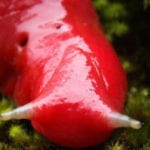 Books
Books  Books
Books  Humans
Humans 10 of the World’s Toughest Puzzles Solved in Record Time
 Mysteries
Mysteries 10 Scientific Mysteries We Don’t Fully Understand
 Weird Stuff
Weird Stuff 10 Celebrities Who Have Admitted to Alien Encounters
 Our World
Our World 10 Surprising Secrets of Notre Dame Cathedral
 Miscellaneous
Miscellaneous 10 Intriguing Origins of Popular Carnival Rides
 Weird Stuff
Weird Stuff Ten Unexpected Discoveries Involving Vomit
 Movies and TV
Movies and TV 10 Actors Who Almost Didn’t Take Career-Defining Roles
 Technology
Technology 10 Little-Known Shifts in Computer Science
 Religion
Religion 10 Catholic Histories That Reveal Acceptance of Abortion and Contraception
 Books
Books 10 Famous Writers Who Were Hypocritical
 Humans
Humans 10 of the World’s Toughest Puzzles Solved in Record Time
 Mysteries
Mysteries 10 Scientific Mysteries We Don’t Fully Understand
Who's Behind Listverse?

Jamie Frater
Head Editor
Jamie founded Listverse due to an insatiable desire to share fascinating, obscure, and bizarre facts. He has been a guest speaker on numerous national radio and television stations and is a five time published author.
More About Us Weird Stuff
Weird Stuff 10 Celebrities Who Have Admitted to Alien Encounters
 Our World
Our World 10 Surprising Secrets of Notre Dame Cathedral
 Miscellaneous
Miscellaneous 10 Intriguing Origins of Popular Carnival Rides
 Weird Stuff
Weird Stuff Ten Unexpected Discoveries Involving Vomit
 Movies and TV
Movies and TV 10 Actors Who Almost Didn’t Take Career-Defining Roles
 Technology
Technology 10 Little-Known Shifts in Computer Science
 Religion
Religion 10 Catholic Histories That Reveal Acceptance of Abortion and Contraception
10 Strange Stories And Origins Of Our Favorite Candies
Everyone has a favorite candy. Some people like the powdery sugar in Pixy Sticks. Others prefer classics like lemon drops and root beer barrels. Some like chewy candy like licorice, and some like to suck on candy like jawbreakers.
Anyone who has a sweet tooth knows that candy is the best way to sate it. However, you may not know everything about your favorite candy—like where it got its name, how it was first made, or even why.
10 Saltwater Taffy Was Probably Named As A Joke
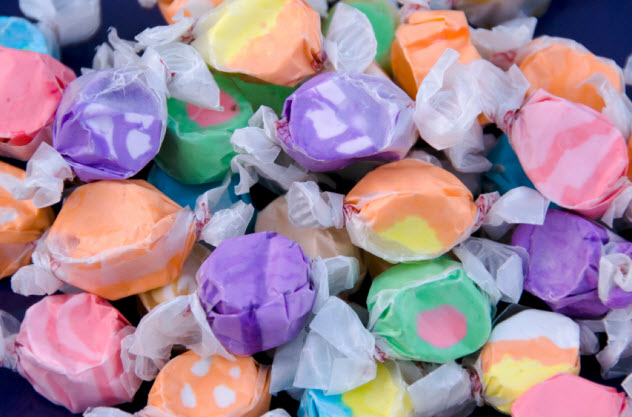
Although nobody knows who made it first, saltwater taffy got its start either on the boardwalk in Atlantic City, New Jersey, or at Midwestern county fairs in the 19th century.
Taffy is made with sugar, salt, flavorings, corn syrup, and other ingredients that vary between recipes. It is then pulled and molded to aerate the mixture so that it becomes soft and chewy. Regardless of its name, this soft taffy does not have saltwater in it, although some brands do add extra salt.
According to rumor, saltwater taffy got its name from candymaker David Bradley. During an 1883 storm, his taffy stock became soaked with saltwater from the Atlantic Ocean. But even though his store was flooded, customers still came in to ask for his taffy. He jokingly called it “saltwater taffy,” and the name stuck.
In 1923, John Edmiston trademarked the name and tried to get a cut of the profits from anyone selling “saltwater taffy.” But the Supreme Court decided that the name had already been used too often for candy and ruled against him. As a result, Edmiston did not receive any royalties. The term became common again and is now the accepted way to market nearly any taffy, salty or not.
9 Cotton Candy Was Promoted By Dentists
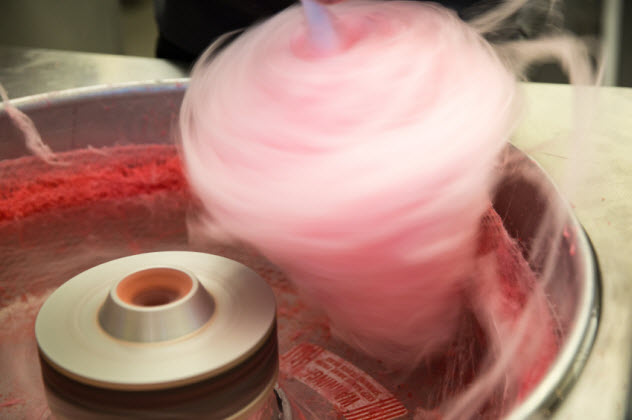
Originally called fairy floss, cotton candy has gone by many monikers, such as candy floss or spun sugar. John C. Wharton and William J. Morrison patented their version of a cotton candy machine in 1899. Then they introduced the machine and their new candy concoction at the St. Louis World’s Fair in 1904. They sold nearly 70,000 boxes of candy at that fair.
As cotton candy is made entirely from caramelized sugar, most people realize that such a sweet overload will probably send you to a dentist sooner rather than later. Interestingly, Morrison was a dentist. To be fair, he was also a lawyer, an author, and a civic leader. But still, a dentist creating cotton candy has to raise some eyebrows.
In 1900, cotton candy was introduced to the Ringling Brothers by Thomas Patton, who had invented a more modern version of the cotton candy machine. Even later, Josef Lascaux, another dentist, created another version of the machine that he never officially patented. He did, however, coin the name “cotton candy.”
As to why more than one dentist had a hand in the rise of cotton candy’s popularity, we can only guess that it has to do with the consequential rise of cavities.
8 Pop Rocks Caused Urban Legend And Widespread Panic
The fizzing candies Pop Rocks were developed in 1956 by General Foods research scientist William A. Mitchell. Originally sold for 15 cents a packet in the early 1970s, they came in orange, cherry, and grape flavors. Pop Rocks are small, crystallized pieces of sugar with air pockets of carbonation that “pop” and “crackle” when the candy melts in your mouth or in water.
This popping sound led to an urban legend. As early as 1979, there were rumors about a child who had exploded after eating Pop Rocks with soda. At one point, the Food and Drug Administration even set up a hotline to field any questions from parents concerned about their children eating the candy.
After a large marketing effort to combat the rumors that were gripping the imagination of the public, Pop Rocks eventually disappeared from market shelves in 1983. They have since popped back up and had a resurgence in popularity.
But the crazy rumors still linger and were even featured on MythBusters. Don’t worry about busting your gut, though. The most that Pop Rocks and soda will do to your stomach is to make it upset.
7 Lollipops Have Strange Name Origins
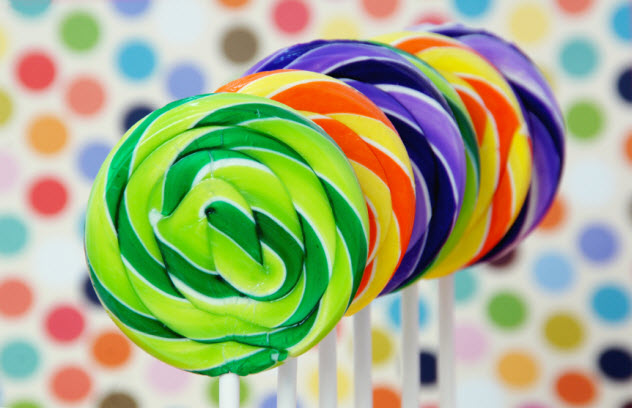
Since ancient times, candies and sugary sweets have often been put on the ends of sticks for easy eating. It became popular in the 17th century to enjoy boiled sugar treats that were pressed onto sticks to eat. This treat was soft candy rather than hard, but it was one of the forerunners of the modern lollipop.
In the 20th century, the owner of McAviney Candy Company often brought home for his children the leftover sticks used to stir batches of candy. He began selling these sticks in 1908, which coincided with the invention of the first automated machine that put sticks in hard candy. Samuel Born, the inventor of the candy machine, was even awarded a key to the city of San Francisco for his invention.
In 1908, George Smith began marketing the modern version of a lollipop through his confection company, Bradley Smith Company. He coined the term “lollipop” in 1931 after a famous racehorse of the time called Lolly Pop.
When lollipops stopped being produced during the Great Depression, the name fell into the public domain. The name also meant something like “tongue slapper” because “lolly” was Old English slang for “tongue” and “pop” meant “to slap.”
Some linguists have even linked the name to the Roman phrase loli phaba (“red apple”), supposedly referring to the traditional Roman toffee apple treat. So the famous name originates from a horse, Old English slang, or ancient Rome. Or it could be made-up. Whatever the truth, it’s a unique way of looking at lollipops.
6 Snickers Also Has Strange Name Origins
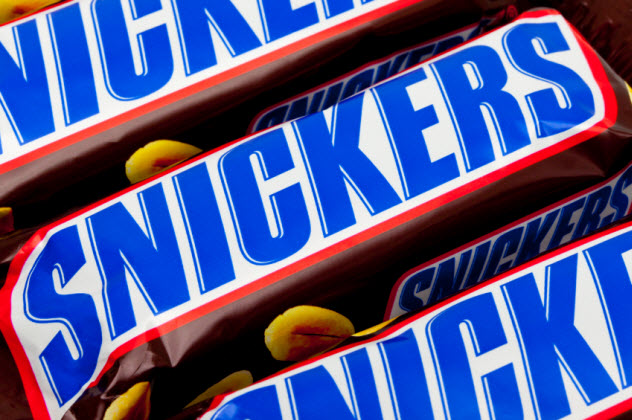
The Snickers bar has an interesting story behind its name as well. Although the Snickers bar was not the first peanut, caramel, and nougat candy bar, it was one of the most popular and most enduring of its time.
Frank and Ethel Mars, founders of Mars, Inc., had great success with the Milky Way bar and were open to developing new candies. After three years of development, the Snickers bar was released in 1930.
Just months before the release of their new candy bar, Ethel’s favorite horse, Snickers, died. This was a hard loss for her as she adored her horse. So she and her husband named the new candy bar “Snickers” in the horse’s honor.
Interestingly, the farm where Snickers had lived was called the Milky Way Farm, just like their other famous candy bar. Regardless of this name theme, Snickers candy bars live on as one of the best-selling candies in the world.
5 Circus Peanuts Inspired Lucky Charms
Fondly remembered as one of the original penny candies, Circus Peanuts have been around since the 1800s. The banana-flavored marshmallows are notorious for their love-it-or-hate-it reputation.
Maybe that’s why no one has admitted to inventing them, much less tried to brand them. Since we don’t know who the creator is, we also have no idea why these peanut-shaped candies have a banana flavor.
Either way, these little gum stickers are the reason why we have marshmallow cereals. General Mills product developer John Holahan found that the mixture of Cheerios and cut bits of Circus Peanuts was good enough to sell, which led to the development of the ever-popular Lucky Charms cereal.
So maybe, even if you’re not fond of Circus Peanuts, you might want to thank whoever made them if you love marshmallows in cereal.
4 M&M’S Lost A Color In Cancer Panic
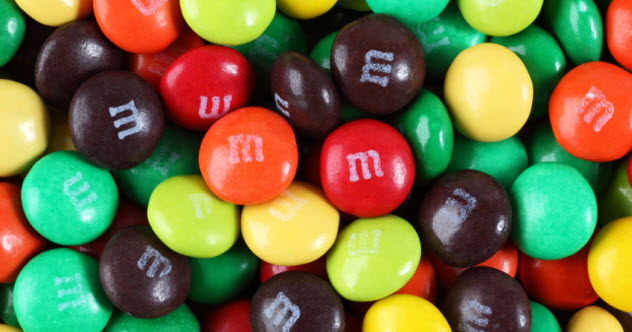
Forrest Mars Sr., son of Frank and Ethel Mars of Mars, Inc., was inspired by the candy-shelled chocolates in military rations to make the famous M&M’S candies. Named for Forrest Mars Sr. and Hershey executive William Murrie, these candies were patented and put into production in 1941.
Eventually, they were sold only to the military. But when the war ended, their popularity continued with civilians. The candies were sold in cardboard tubes, and the original colors were brown, red, violet, yellow, and green. However, in 1979, one of these colors faded from the mix due to FDA test results.
The dye called FD&C Red No. 2 was linked to tumors in female rats in a 1971 Russian test. However, this test was later found to have been incorrectly performed. The tested dye wasn’t the food coloring that was used in M&M’S anyway.
But the damage had already been done. Mars had to deal with a public that was panicked over the possible effects of FD&C Red No. 2. Used to color several popular foods like soda, hot dogs, ice cream, and candy, the public demanded that the controversial dye be removed.
Although M&M’S were colored with Red No. 40, Mars replaced red M&M’S with orange M&M’S to ease public anxiety. In 1987, the red color was reintroduced for M&M’S and has been popular ever since.
3 Necco Wafers Were Brought To The South Pole By The Ton
These chalklike candies were invented in 1847 when Oliver Chase made the first lozenge cutter. It became the machine that launched the candy industry, and it wasn’t long before its first creation, Necco Wafers, made it big.
The military commissioned a major portion of Necco Wafers’ production during World War II because the candies were easy to transport without melting. They were also cheap enough during the Great Depression to become a popular civilian treat.
Famous Arctic explorer Donald MacMillan gave out these candies to native Canadians on his journeys, but that was nothing in comparison to Admiral Richard Byrd. For a two-year journey to the South Pole, Byrd packed 2.5 tons of Necco Wafers. That was about 0.5 kilograms (1 lb) of candy per week for every man on the crew for the entire trip.
There is no record as to whether the entire amount was consumed. Still, the eight original flavors that Admiral Byrd carried with him can be enjoyed today. Except for the price, not much about Necco Wafers has changed since they were invented.
2 Dubble Bubble Gum Was An Accident
Ancient people chewed on bits of tree bark tar. The Maya and Aztecs also chewed on chicle from sapodilla trees. Then, in the 1840s, John Curtis used spruce tree resin to make gum to chew on and later created the first chewing gum factory.
It wasn’t until 1928, however, that our modern idea of chewing gum was created. Accountant Walter E. Diemer created it by accident. He liked to experiment in his spare time. After expanding on a failed recipe, he found a way to make chewing gum that was easier to chew and more resistant to breakage in packaging.
Interestingly, the iconic pink color was chosen simply because that was the only color available. After a successful trial run, the new gum was packaged and marketed as Dubble Bubble Gum. Eventually, the packages included comics that featured Dub, Bub, and the iconic Pud.
This only helped the popularity of the new chewing gum. At the beginning of World War II, it was even shipped to the military before the scarcity of products forced the factories to stop production. These factories reopened soon after the war ended and still cater to our bubble-blowing, cud-chewing needs today.
1 PEZ Dispensers Were Created To Attract Smokers
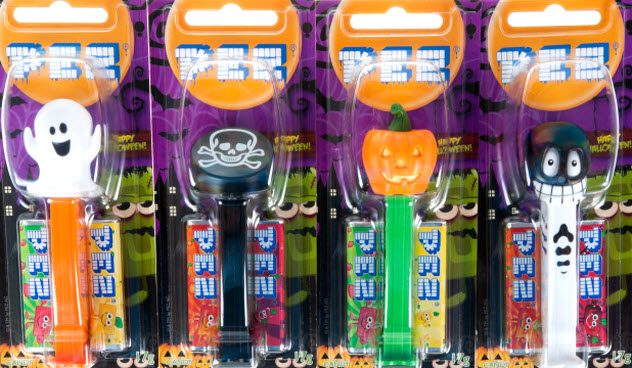
The famous PEZ candies were created in Vienna, Austria, in 1927. Originally, they didn’t have the sweet, fruity flavors that we know today. They used to be peppermint flavored. In fact, their name comes from pfefferminz, the German word for “peppermint.”
Packaged in tins, the candies were popular for a time. They were supposed to be used as an alternative to smoking because their creator, Eduard Haas III, disliked smoking.
In 1949, new PEZ dispensers designed by Oscar Uxa were introduced as a way to hygienically share the candies without touching all of them. The dispensers were also designed to draw in smokers. Flicking open the top of a PEZ dispenser was meant to be like flicking a lighter. For a time, Haas even used the slogan “No Smoking, PEZing Allowed.”
In the transition to American markets, PEZ changed to their iconic fruity flavors, and the dispensers acquired their character tops. Whether PEZ have actually discouraged smoking is debatable. But PEZ still exist today as beloved combinations of candies and toys.
+ US Senate Candy Desk
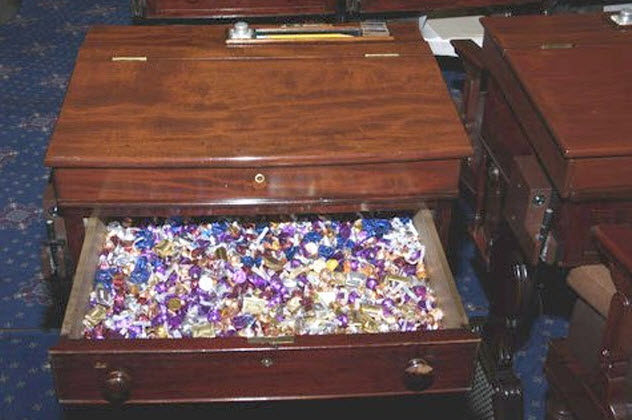
The US Senate candy desk is an aisle desk on the Republican side of the Senate that is stocked with various candies. However, it is open to Democrats as well.
The senator assigned to the seat is in charge of keeping it stocked, traditionally with sweets from his own state. This is the only seat that is not assigned by seniority. Instead, it is usually offered to those who love candy and sweets.
The tradition started in 1965 with Senator George Murphy, who had a legendary sweet tooth. He stocked his desk drawer full of candies and offered them to senators who were passing by. When he lost his seat in 1970, the next senator to occupy the desk continued the tradition.
It becomes an interesting tidbit when the desk changes owners and even caused an uproar in the Senate when Senator Craig Thomas took over in 2007. There was concern that his home state of Wyoming didn’t have any well-known candy companies such as Hershey’s, which supplied 180 kilograms (400 lb) of candy per year when Pennsylvania Senator Rick Santorum occupied the desk.
But the fear that Thomas would be unable to keep the desk stocked was overblown. Several Wyoming artisan companies stepped forward to supply the candy desk, and the candy tradition continued without a hitch.
Erin S. Miller is a woman working her way through school and her own ambitions. She enjoys the strange and unknown as much as writing about them.


